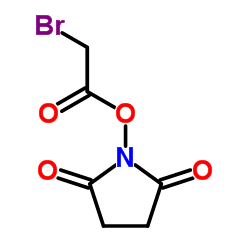| Structure | Name/CAS No. | Articles |
|---|---|---|
 |
1-(2-Bromoacetoxy)-2,5-pyrrolidinedione
CAS:42014-51-7 |
| Structure | Name/CAS No. | Articles |
|---|---|---|
 |
1-(2-Bromoacetoxy)-2,5-pyrrolidinedione
CAS:42014-51-7 |